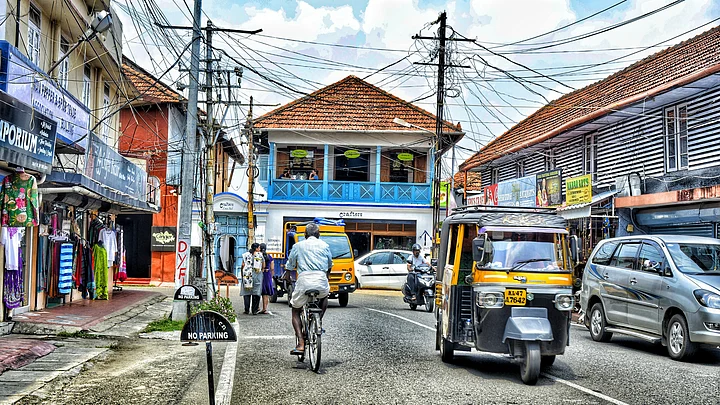If there’s one thing I truly enjoy, it is the discovery of the innate mysticism of historical places.
On the last day of a recent Kerala trip – which had already encompassed the cardamom plantations in Thekaddy and the tea gardens of Munnar – I came to know about a small Jewish community in Kochi. They were calling it the ‘last Jew town’. I decided to see it to believe it – and soon, found myself heading over to the quaint little Jewish settlement in Fort Kochi in search of the last few remaining Jews of Cochin.
Along the way, I implore my host John to tell me more about them. “The first of the Jews who settled near Cochin can trace their lineage back to the days of King Solomon. Freely interacting with the local Malayali population, they built beautiful synagogues throughout Kerala,” he tells me, steering his way through the narrow yet beautifully manicured streets of Kochi.
The second addition to the population happened when a few families of Sephardic Jews from the Iberian Peninsula settled here in the late 15th century. But what will perhaps surprise you the most, is the unfaltering love between the two cultures that have otherwise been at loggerheads in the Middle-East.
I almost ask him why but he points to a small signboard stating that we have reached our destination.
The whole of Jew Town is established around the mystical Paradesi Synagogue – and the small street leading up to it is flush with colours. The intermingling of blue, red and yellow in Jew Town, in fact, leaves you spellbound. The Paradesi Synagogue (thus named as it was built by those of European descent) is divided into an outer sanctuary and an inner prayer area.
A small museum on our right, just as we enter, depicts the centuries-old history of the Jewish community. There are paintings tracing the origin from King Solomon to the establishment of the synagogue in the latter half of the 16th century.
We leave our shoes outside as we enter the main prayer area – a tradition that has been imbibed from the Hindu culture. I cannot help but look on, wide-eyed, at the lights reflecting off the chandeliers of every possible colour.
Back on the street, I try to find the remnants of the community that once thrived here.
As many of the original inhabitants have migrated back to Israel, one place that has stood the test of time is Sarah’s Handicrafts. At 94, Sarah Cohen is the oldest remaining member of the community. Her shop is known for the mezuzahs and challah covers.
“Sarah used to stitch herself but now her hands simply don’t have the same dexterity anymore,” says Thaha Ibrahim, the man who has been taking care of Sarah. His son Suleiman shows us around the house and allows us to look at her black and white photographs.
Any visit to the Jewish quarters of Kochi is incomplete without a visit to Koder House. Overlooking the Arabian Sea and the Chinese fishing nets that Fort Kochi is so known for, this red brick building almost holds the torch of the Jewish tradition in the city.
Built by Samuel Koder, an 18th century Dutch entrepreneur, it is now a heritage hotel. The dining room of the hotel traces the history of the house while the rooms are built in a style reminiscent of Dutch architecture. The teak wood panelling on the floors and staircases along with the four poster beds take us back to an era when imperialism was at its peak. This six-roomed hotel pays homage to the ancient Jewish traditions and offers a meal – including a traditional Jewish pudding that surpasses quite a few expectations!
Although I had gone to this part of Fort Kochi to discover the history of Jews in India, what I found instead was a culture slowly fading away. Services at the synagogue are far and few between and are usually only held with the inclusion of Jewish tourists to make up minyan (a group of 10 men needed to form a prayer service).
When you travel to Kochi, make sure you catch a glimpse of the last Jews before they are lost in the pages of history.
(Sudipto De is a surgeon who loves to eat and travel. A WSET Level 1 in wines, he travels with his photographer girlfriend Snigdha capturing the beauty of a place and its food in intricate detail. He chases stories in the forts of the medieval era and loves beverage based destinations. Sudipto can be reached @saltandsandals)
(At The Quint, we question everything. Play an active role in shaping our journalism by becoming a member today.)
